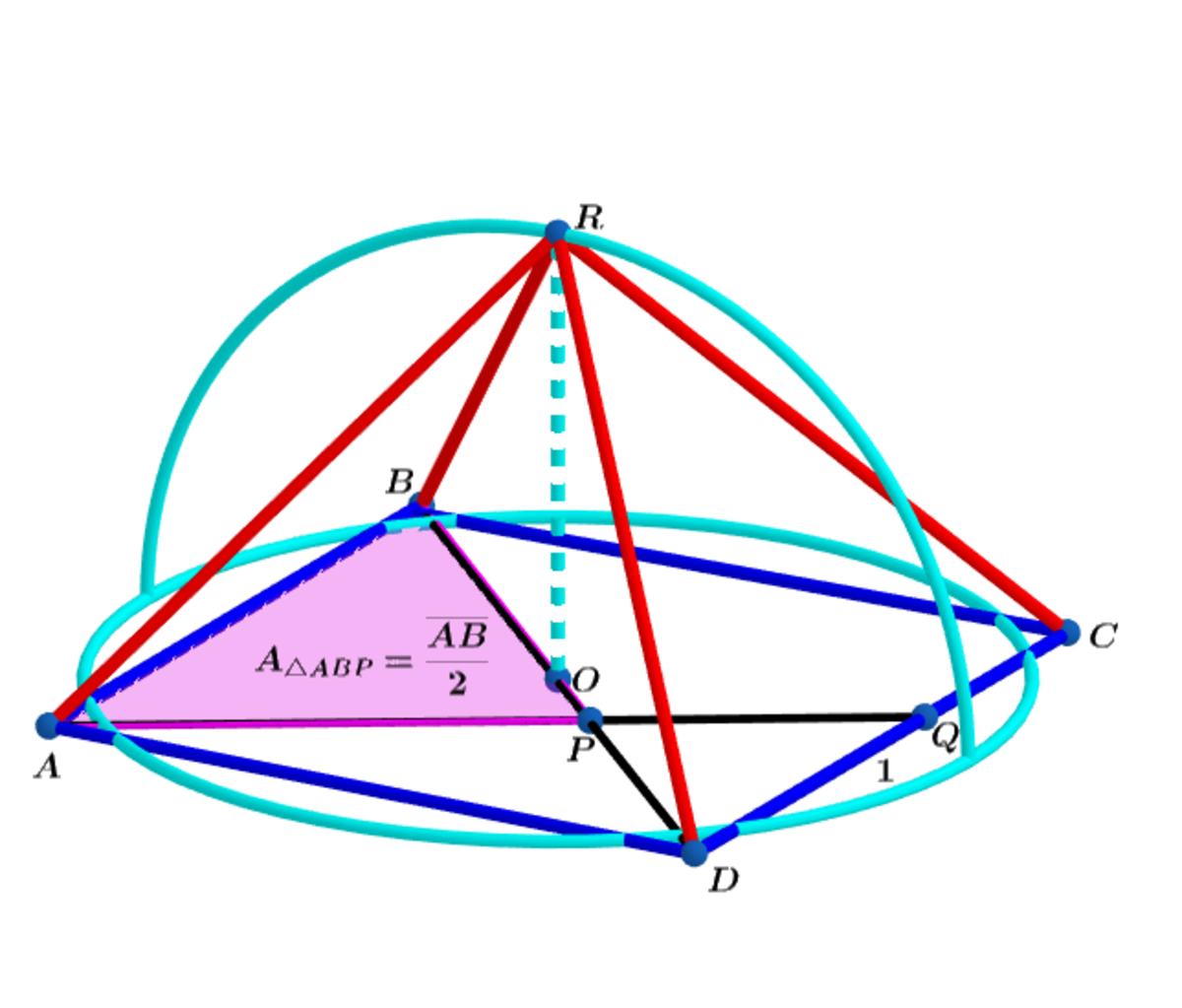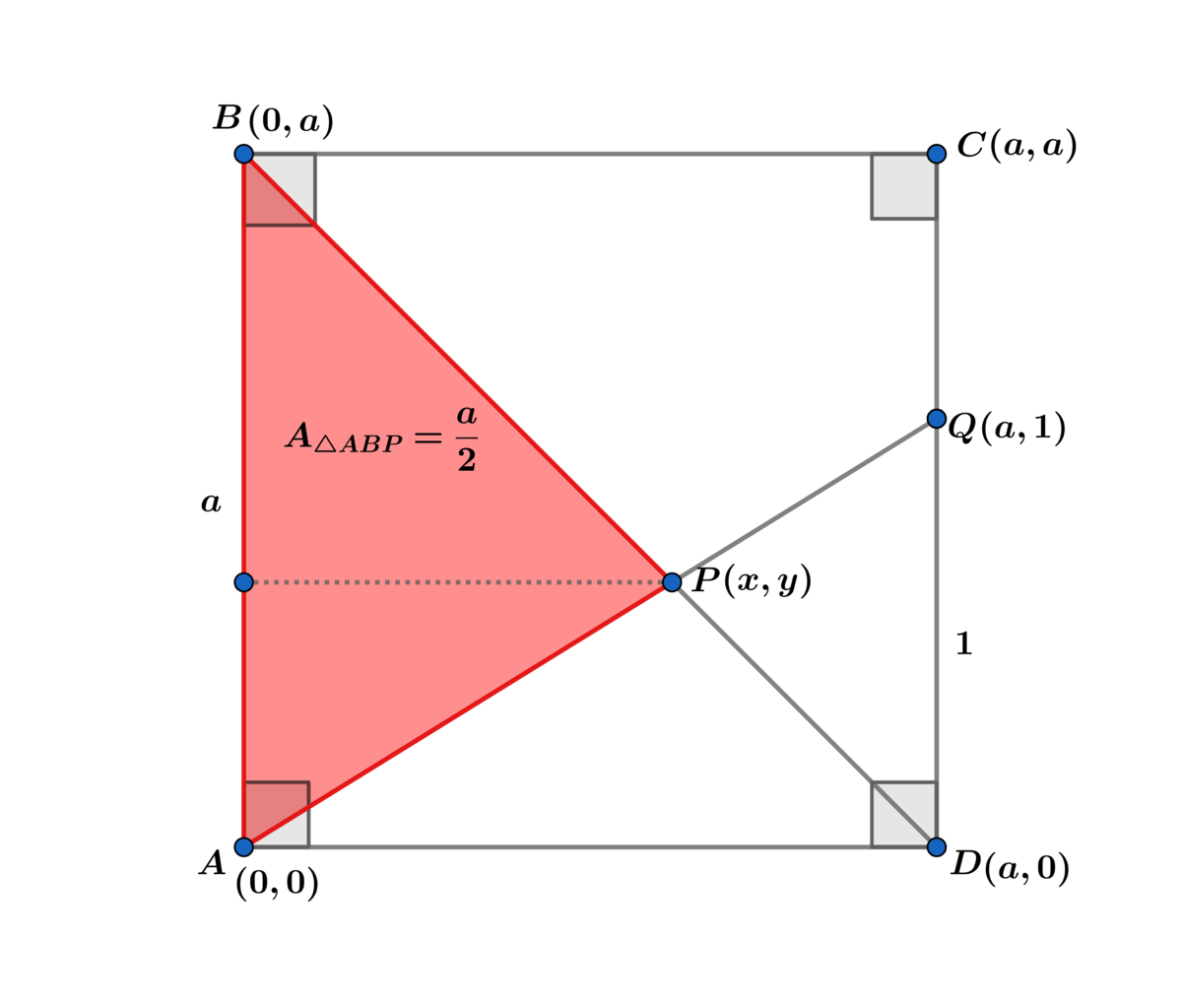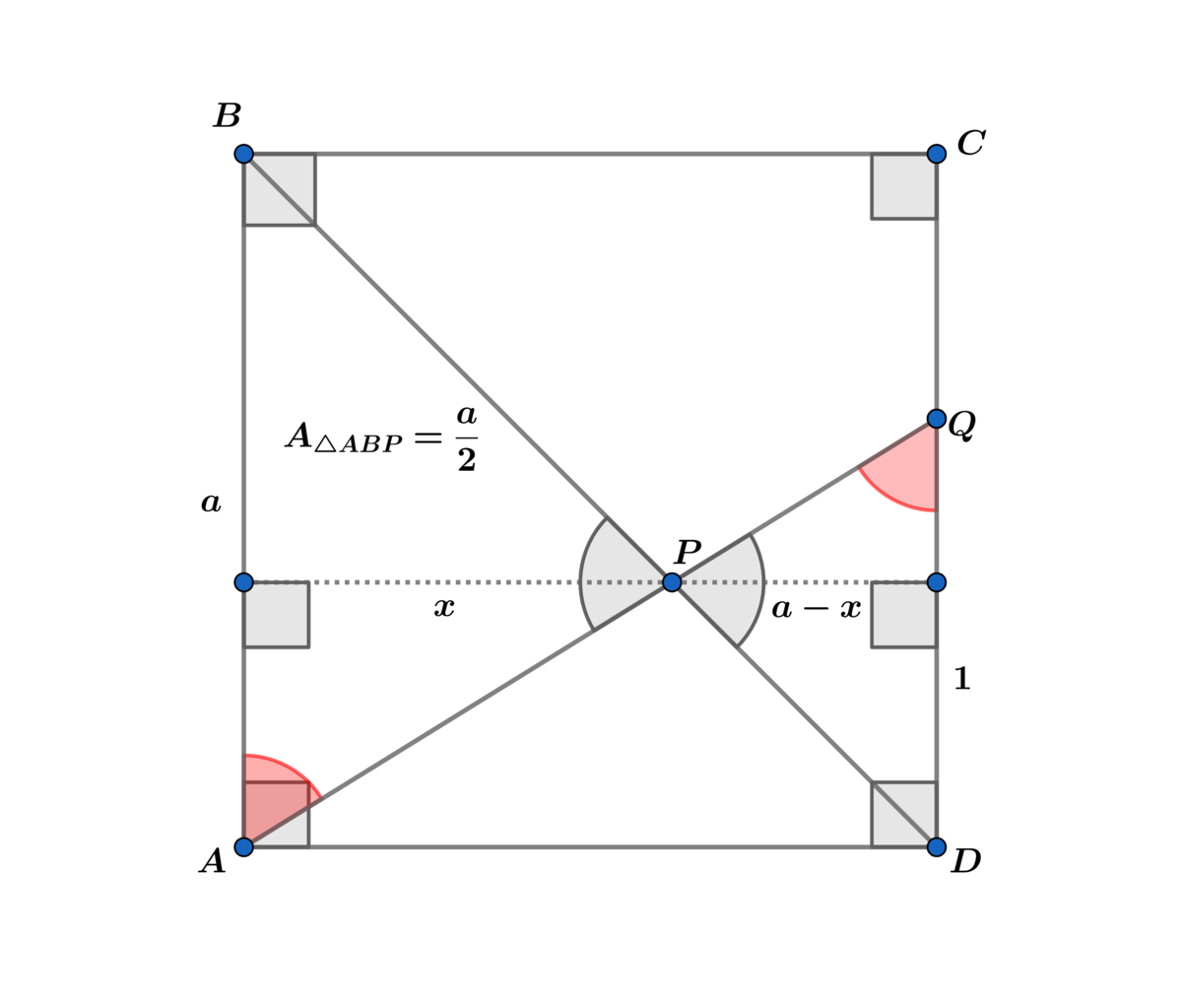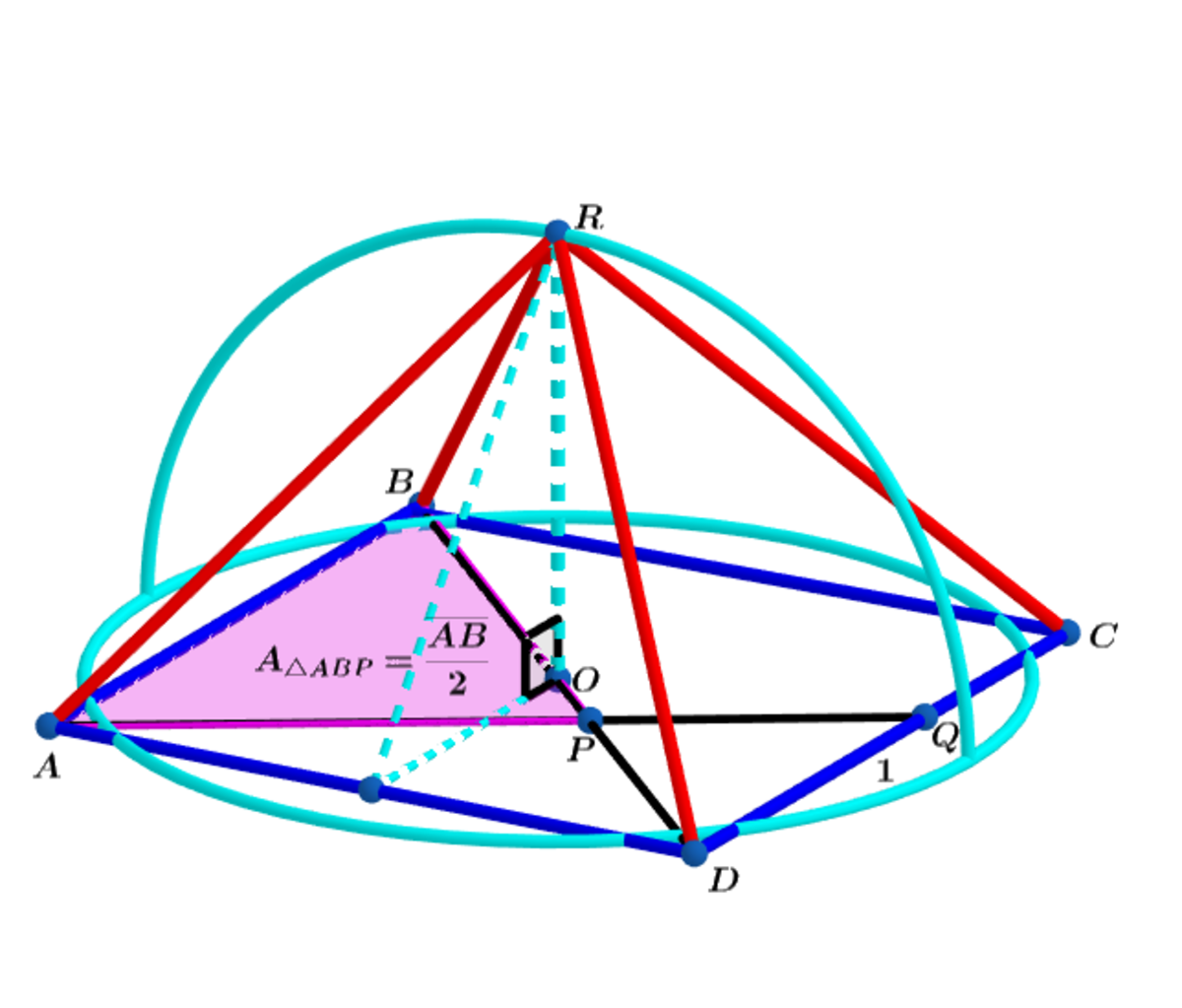Right Square Pyramid with a special base - Reposted

In square base A B C D , B D and A Q intersect at P with Q D = 1 and the area
A △ A B P = 2 A B .
Let O be the center of square A B C D and construct a circle centered at O whose circumference is equal to the perimeter of the square. Folding the arc of the semi-circle at a right angle, as shown above, the radius of the semicircle becomes the height of the right square pyramid.
Let A s be the lateral surface area and A □ be the area of the square base.
Find A □ A s .
The answer is 1.618993.
This section requires Javascript.
You are seeing this because something didn't load right. We suggest you, (a) try
refreshing the page, (b) enabling javascript if it is disabled on your browser and,
finally, (c)
loading the
non-javascript version of this page
. We're sorry about the hassle.
2 solutions
Exactly the same way - the dimensions of the base are a distraction.
I provided two solutions for the square base.
Solution using coordinate geometry:

For B D : y = a − x and for A Q : y = a 1 x ⟹ x = a + 1 a 2 ⟹
A △ A B P = 2 ( a + 1 ) a 3 = 2 a ⟹ a ( a 2 − a − 1 ) = 0 a > 0 ⟹
a = 2 1 + 5 = ϕ .
Solution using similar triangles:

Since vertical angles are congruent and A B ∥ C D ⟹ alternate interior angles are congruent ⟹ △ A B P ∼ △ D P Q ⟹
1 a = a − x x ⟹ x = a + 1 a 2 ⟹ A △ A B P = 2 ( a + 1 ) a 3 = 2 a
⟹ a ( a 2 − a − 1 ) = 0 a > 0 ⟹ a = 2 1 + 5 = ϕ

Let O R = r ⟹ 2 π r = 4 ϕ ⟹ r = π 2 ϕ
Let T be the midpoint of A D ⟹ O T = 2 ϕ
In △ R O T the slant height is s = π 2 4 ϕ 2 + 4 ϕ 2 = 2 π ϕ 1 6 + π 2 ⟹
A s = π ϕ 2 1 6 + π 2 ⟹ A □ A s = π 1 6 + π 2 ≈ 1 . 6 1 8 9 9 3 .
Let each side of the square base be of length a and the height of the pyramid be h . Then 2 π h = 4 a ⟹ a h = π 2 . Height of each lateral face is h 2 + 4 a 2 = 2 a 1 + ( a 2 h ) 2 = 2 a 1 + π 2 1 6 . So area of the lateral surface of the pyramid is 4 × 2 1 a × 2 a 1 + π 2 1 6 = a 2 1 + π 2 1 6 . Area of square base is a 2 . Therefore the required ratio is 1 + π 2 1 6 ≈ 1 . 6 1 8 9 9 3 .